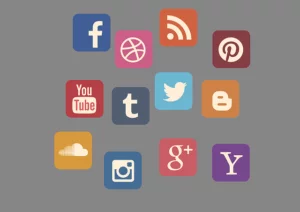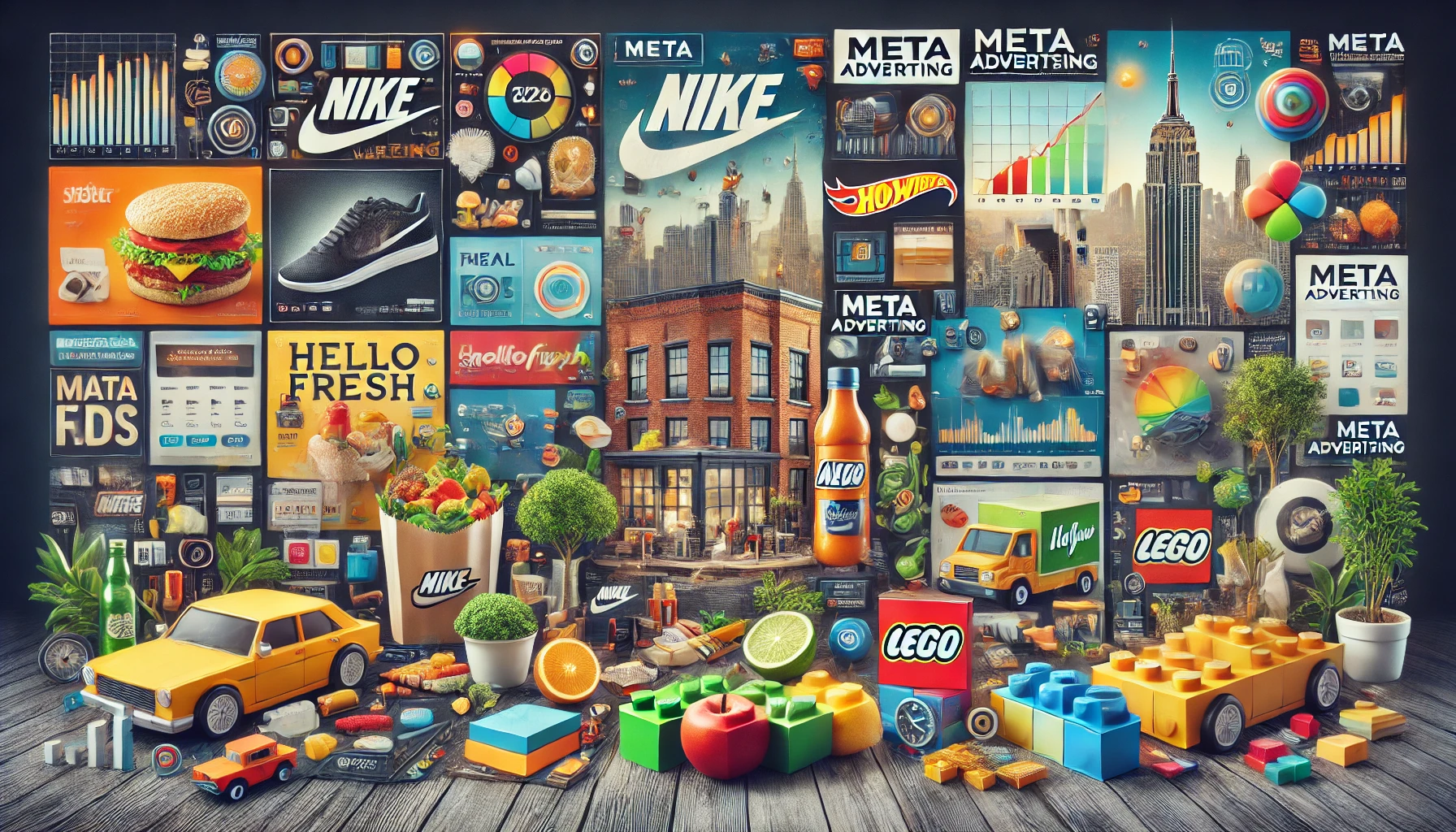Real talk: how much time do you spend absent-mindedly scrolling through your Facebook, Twitter, or Instagram feed on a given day? How much time do you spend watching videos on YouTube, Snapchat, or TikTok? Be honest.
Social media is a big part of people’s lives nowadays, with billions of users spending just as many hours posting, sharing, commenting, and shopping. People don’t just social media to share cat pictures anymore; they also use it to research which repair shop they should take their car to, who has the lowest prices on sneakers, what new TV shows are coming to their favorite streaming services, and more.
In other words, your business can’t afford to not be on social media. But which platforms should you sign up for? And, once you’re there, what do you do with those accounts?
Based on the number of monthly active users (or MAU), the five most popular social media platforms in 2021 were:
- Facebook (2.7 billion MAU)
- YouTube (2 billion MAU)
- Whatsapp (2 billion MAU)
- Instagram (1.16 billion MAU)
- TikTok (689 million MAU)
User numbers aren’t the only things your business should pay attention to, though. There’s also the question of demographics. When deciding which platforms to focus your marketing efforts on, ask what kind of users are on each platform. Then ask how those much those user bases overlap with your target audience.
Of all the social media platforms, Facebook has the broadest and most diverse audience, ranging from teenagers to seniors and everyone in between. On the one hand, this makes it easy to cast a wider net and to market to more people. On the other hand, there’s also a lot more competition, and a lot of the people you’re marketing to might not even be the kind of people who need or want what you’re selling.
On Facebook, geofencing and other demographic targeting strategies can help narrow things down. When it comes to smaller social media platforms, though, consider the nature of your business when deciding where to focus your digital marketing efforts. For example, YouTube’s audience skews younger than Facebook and has a predominantly male user base. TikTok skews even younger than that but has a predominantly female user base.
Remember: you don’t have to where everyone else is. You just have to go where your audience is.
So, what’s next? How do you leverage your social media platforms for all that they’re worth? How do you turn likes, follows, and shares into conversions, repeat customers, and increased revenues?
When you have digital marketing questions, LSEO has the answers! Here are some helpful tips for how to market your business on social media:
Best Ways to Use Social Media to Promote Your Business
Optimizing Your Social Media Profile
Fill Out All Relevant Fields
A lot of people don’t fill out all the fields on their social media profiles. That’s okay for private users, but for brands and businesses? Not so much. Filling out all relevant fields on a social media profile isn’t just busywork; it’s actually an excellent opportunity for your company to clearly and efficiently communicate what it is, what products or services it sells, and who its target customers are.
More important than the opportunity your profile’s About section provides, though, is the potential danger that neglecting it represents. If someone is looking at your About section, then it’s because they’re interested in your business in some way. They want to learn more about you. If they don’t find the information they’re looking for, not only will they likely lose interest, but they’ll probably perceive your business as unprofessional or even illegitimate.
That said, just because you can fill out a field doesn’t mean you should. Many fields are optional and, while you should definitely complete all of those that are relevant to your business, irrelevant fields are better left ignored. Many social media platforms design their profiles to accommodate a wider variety of business and user types; not all fields will apply to you. Make use of what you can, then move on.
Use Branded Imagery
Every social media platform is different in terms of content. YouTube and TikTok are video-based, with the former focusing on long-form content and the latter focusing on smaller, bite-sized pieces. Medium and Instagram are more heavily text-based, but again they differ in terms of content size.
One thing all social media platforms have in common, though, is that they all utilize visual imagery to help identify users. Some use more imagery (TikTok, Instagram), some use less (Twitter, Reddit), but they all use it. At the very least, most social media platforms make use of profile and header pictures.
Consistency is important here. Use the same profile and header pictures across all profiles, and keep the information and links in your About sections identical (or as close to it as possible).
Below is a screenshot of Netflix’s Twitter account. Notice how the branded imagery is the same on both. They both use the same instantly identifiable red N logo as a profile pic, and they both are promoting the same product in their header image.
In addition to conveying a distinct brand identity, this helps users recognize that, yes, these are Netflix’s official accounts. In a world where social media makes it easier than ever for phishing scams and “parody” accounts to emulate your brand, assuring users that you are the real deal is crucial.
That little blue verification checkmark goes a long way, too; if possible, you should definitely try to get one for all your business accounts.
Keep Your Page Active
As alluded to earlier, one of the biggest challenges of using social media for business is how much competition there is, not just for conversions but for a user’s attention. It’s not enough to just sign up for a social media account, put a link to your main website in the About section, and then leave it at that. You have to constantly be reminding users that you exist.
Try thinking of your social media account as a free daily newsletter that you’re sending out to your target audience. Social media posts make it simple and instantaneous to update customers about the products or services you offer, upcoming events, sales, and other news items.
Unlike a newsletter, though, social media is a two-way street. Making the most of your social media accounts means not just advertising to users, but actively engaging with them. There are many ways of doing that: responding to user comments, holding contests and giveaways, creating user polls, etc.
One easy but effective vehicle for user engagement is to simply share customer posts that relate to your business in some way. These can be product reviews, pictures of people using your services, or just people saying “hey, this is cool” or “I’m excited about this.”
The great thing about retweets and other forms of post-sharing is that it essentially allows you to turn user-generated content into marketing materials. In a way, social media can be a constantly replenished supply of user testimonials, which you can then use to promote your brand through positive word-of-mouth.
Of course, you shouldn’t only be posting content when you have news or positive customer experiences to share. You have to keep yourself in the mix. You have to keep your brand in front of your audience’s eyes.
A good way of doing that is by making the occasional “just for fun” post: participating in a hot new trend, sharing a popular meme, or just highlighting a subject or opinion your customer base is likely to be interested in.
In the screenshot above, Netflix’s Twitter account made a “just for fun” post praising the cast of the 2002 Scooby-Doo movie. There’s no special reason for doing that; they’re not currently running a marketing campaign to promote that film or any of its cast members.
So what was the rationale behind this post? Well, Scooby-Doo memes are popular on Twitter, and Netflix users obviously love movies. People are going to be sharing this post, reminiscing, discussing, debating. And all that is going to increase Netflix’s reach.
Using Social Media Content for Marketing
Increasing Awareness
Understanding how to use social media content for marketing purposes requires understanding the concept of content marketing funnels. In short, a content marketing funnel represents the entire process of using content to navigate a potential customer from a place of ambivalence towards your company all the way to the point where they’re ready to make a purchase.
Users enter the funnel via “Awareness” content. This is the broadest, most general form of marketing content, in that it exists primarily to simply introduce your brand to users, to let them know that you offer a certain product or service they might be interested in.
The screenshot above is a perfect example of social media content designed to build awareness. It’s to inform customers of a service Wal-Mart offers that some people might not be aware of. That is, customers can order the items they need via the store’s mobile app, then have them delivered either right to their doorstep or via curbside pick-up.
Why is this important? Because a service like this is likely to appeal to a whole subsection of users separate from those who shop exclusively in-store. Since Wal-Mart is known primarily for its brick-and-mortar locations, increasing awareness of its online ordering options is the first step towards attracting a previously untapped customer base.
Aiding Evaluation
Once users are aware of your business and the different products and services you offer, the next step is to move them into the “Evaluation” phase of the content marketing funnel. When someone wants or needs something, they don’t usually just buy it from the first person that offers it. They look around a little. They comparison shop, searching for a business that excels in one way or another.
Although many of us think of comparison shopping as a purely price-focused endeavor, customers don’t always settle for the most inexpensive option. People know that “cheap” doesn’t necessarily mean “good,” so they will keep in mind the need to find a good balance between affordability and quality.
In order to craft good evaluation content, you have to think about what your brand can do for customers that other brands cannot. Why are your products and services superior to those of your competitors? Do you offer a better value, more customization options, faster shipping, better build materials, or more convenient locations?
In the Facebook video ad pictured above, Wal-Mart points out a number of qualities that help them stand out from other retailers: they have stores in more than 4700 neighborhoods across the US, they offer home delivery via airdrop in certain areas, they have in-store pharmacies that where customers can get vaccinated, etc.
The messaging of the ad appeals to a certain sentiment, too, which reinforces Wal-Mart’s brand identity. Wal-Mart doesn’t just sell products, it helps people live better, happier, fuller lives. On its own, that claim might not strike a chord with every customer, which is why Wal-Mart backs it up with evidence. This kind of content effectively demonstrates why Wal-Mart is preferable to other retails, while also humanizing the brand.
Mind you, evaluation content doesn’t always have to tug at the heartstrings. That’s one way for businesses to show their worth, but it’s far from the only way. The important thing is to know your strengths and then figure out ways to put those things front and center as much as possible.
Prompting Conversions
The final step in the content marketing funnel is the conversion phase. Conversion content is designed with one single goal in mind: convince a customer to finally take a leap and make a purchase.
At this point in the funnel, a user has already been made aware of your company and has already been given enough information to evaluate for him or herself the reasons they should do business with you and not your competitors. They’re just about ready to commit; all you have to do is give them the opportunity.
The Wal-Mart post in the image above is about as straightforward a piece of conversion content can get. Here’s a product. He’s what it does. Click this link to buy it. End of story.
That link, by the way, is the single most important element any piece of conversion content can have. If you think of this post as a party invitation, then the link is the key that unlocks the door to the venue. Just like an invitation isn’t any good if you can’t get into the building, a piece of content can’t drive conversions if it doesn’t direct users to a product or sales page.
Of course, there are ways to make your conversion content even more enticing. You could, for example, include customer testimonials and reviews, coupon codes, or low stock alerts. The entire content marketing funnel has been about getting users to this point, so don’t be shy about helping them make it across the finish line.
LSEO Knows How to Market Your Business on Social Media
Knowing the basics of how to market your business on social media is one thing. Actually doing it is another thing. And doing it successfully, while navigating the many pitfalls and intricacies of social media marketing, that’s a whole other thing entirely!
Digital marketing isn’t just some side aspect of running a business; it’s a full-fledged business itself. Getting the best results out of your social media marketing efforts requires having a dedicated social media marketing team by your side.
That’s where LSEO comes in. We know how expensive, difficult, and time-consuming it to build an effective social media marketing strategy from scratch, especially when you don’t have the experience and resources of a professional marketing agency.
Here at LSEO, we have that experience and we have those resources. Best of all, we’re ready, willing, and able to put all our expertise to work for you. To learn more about how LSEO can optimize your social media marketing efforts and increase your revenues, contact us today!



